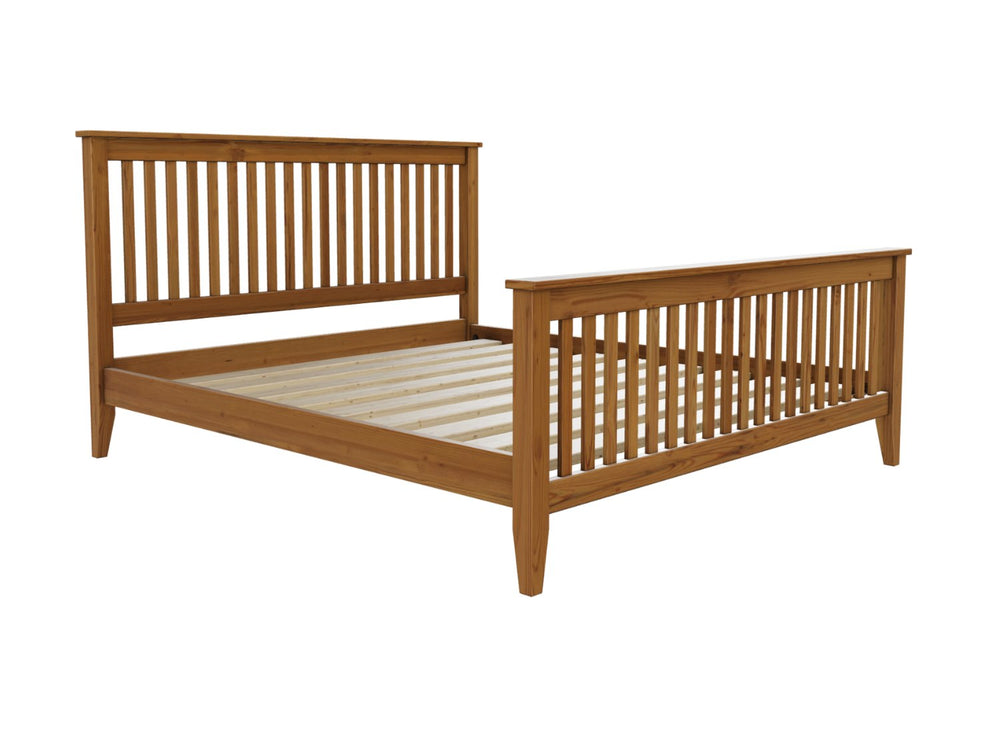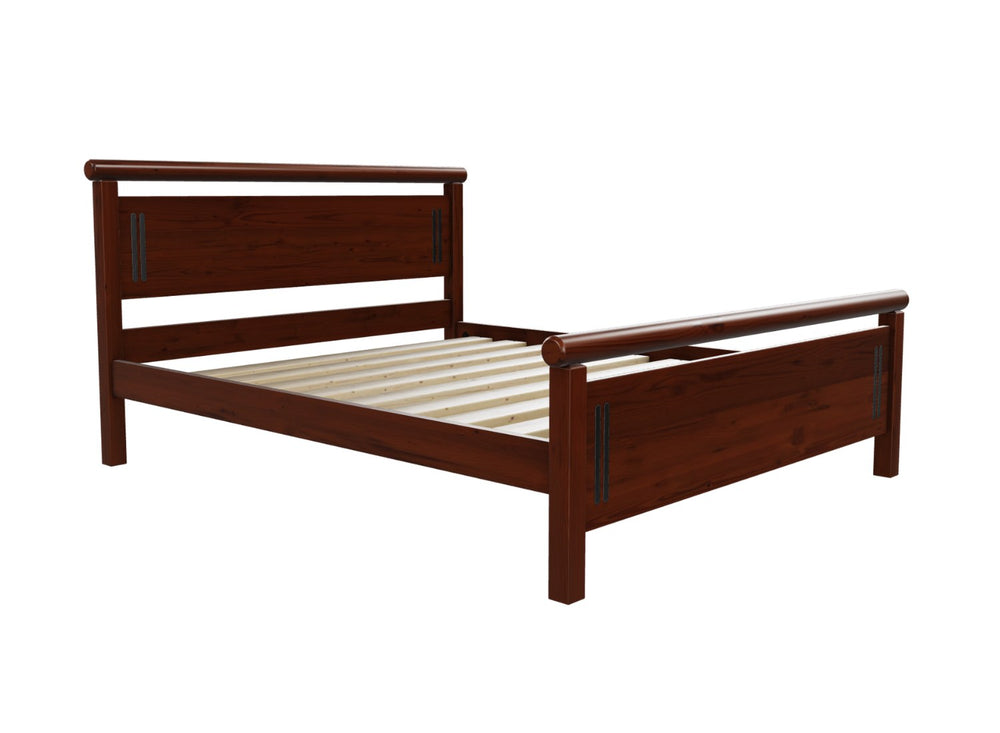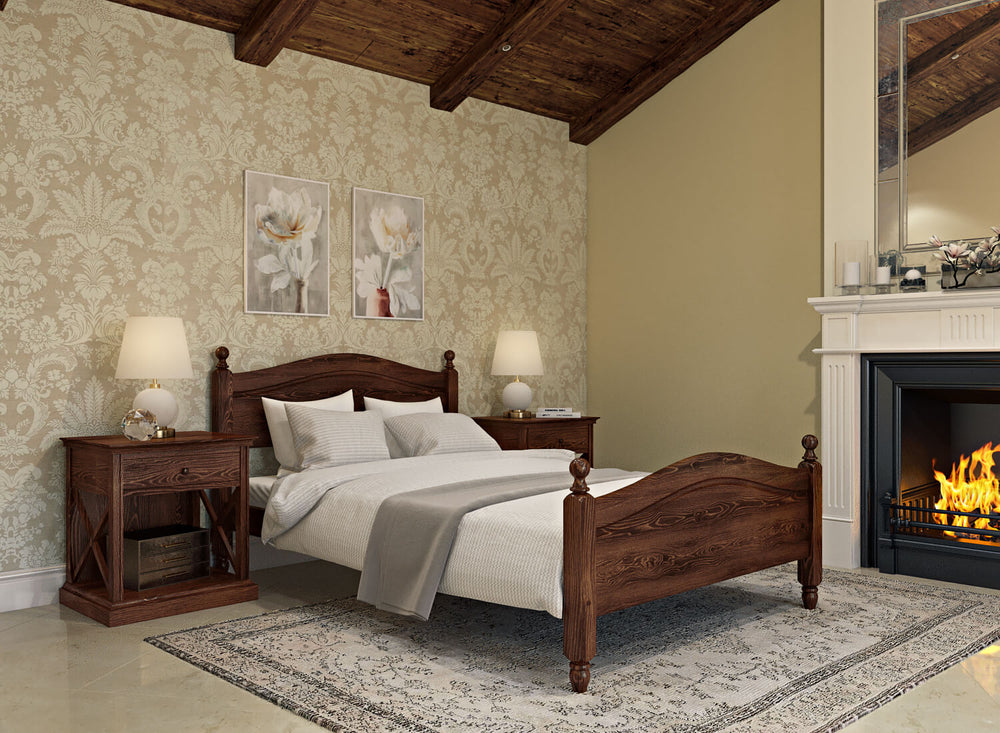
Quick Summary
- Loose joints are the most common cause of squeaks in wooden bed frames.
- Temperature changes and friction between components make creaks worse over time.
- High-quality solid wood beds, like those from Endurance Beds, are designed to resist loosening and squeaking.
Nothing is more frustrating than hearing your bed squeak every time you roll over. Not only is it irritating, but a creaky bed frame can even affect the quality of your sleep if it’s loud enough to wake you up during the night. So why do wooden beds squeak and can anything be done about it? Let’s explore the main causes and discover how to stop the noise for good.
Why Do Wooden Beds Squeak?
The most common culprit behind a squeaky wooden bed is loose joints. When parts of the frame aren’t tightly fitted, the wood rubs together each time the bed moves — and that friction creates an unmistakable creak.
Common Causes of Squeaking
- Loose or worn joints from years of use.
- Seasonal temperature changes causing wood to expand and contract.
- Low-quality MDF or softwoods that shift easily under pressure.
- Floorboards or walls rubbing against the frame.
Sometimes, the bed frame itself isn’t the only cause. Old mattress springs, broken slats, or even squeaky flooring can add to the noise. Try moving the bed slightly away from the wall or adjusting its position. If the sound stops, the floor or wall may be the true culprit.
Did you know? Metal on metal is a leading cause of noise in metal frames. High-quality solid wood beds are naturally quieter because the organic fibres absorb vibration.
That’s why many people prefer a solid oak or pine frame — they’re quiet, sturdy, and age gracefully without the high-pitched noises that often plague metal beds.
How to Choose a Bed Frame That Won’t Squeak
Choosing a quality bed frame is the easiest way to avoid squeaks altogether. Cheap, mass-produced beds often rely on softwood or MDF, which weaken and shift over time. In contrast, solid hardwood beds maintain their structure and joint strength for years.
What to Look For:
- Solid Scandinavian pine or oak construction.
- Precision joints that stay tight and flush.
- Thick, solid wooden slats rather than sprung ones.
- A suitable weight capacity for all sleepers.

How to Fix a Squeaky Bed Frame
If your bed has already started squeaking, don’t worry — most noises can be fixed in a few simple steps.
Quick Fix Guide
- Identify the source — move on the bed and listen carefully to find where the noise comes from.
- Tighten joints — check and re-secure all screws, nuts, and bolts. Avoid over-tightening to prevent cracks.
- Add lubrication — rub candle wax or beeswax over joints to reduce friction and silence creaks.
- Use cork pads — for older or warped beds, cork can help fill gaps and reduce rubbing.
If you’ve tried everything and the noise persists, it might be time for an upgrade. A high-quality, well-constructed frame can mean years of quiet, restful sleep — no midnight creaks or wobbles included.
✨ Upgrade to Silent Strength
Explore our Wooden Bed Collection at Endurance Beds for handcrafted frames built to last and stay quiet.

Nicholas Forth

Director
Nick has put his 15 years of industry expertise into his blog posts. With the goal of making customers more informed, he provides insight into bed design, durability, and the best choices for different lifestyles and needs. His writing combines technical knowledge with practical advice, helping readers understand what really matters when choosing a bed or mattress. Whether breaking down material differences, exploring trends in bedroom design, or sharing tips on maximising comfort, he ensures every post is both educational and easy to follow.





















































